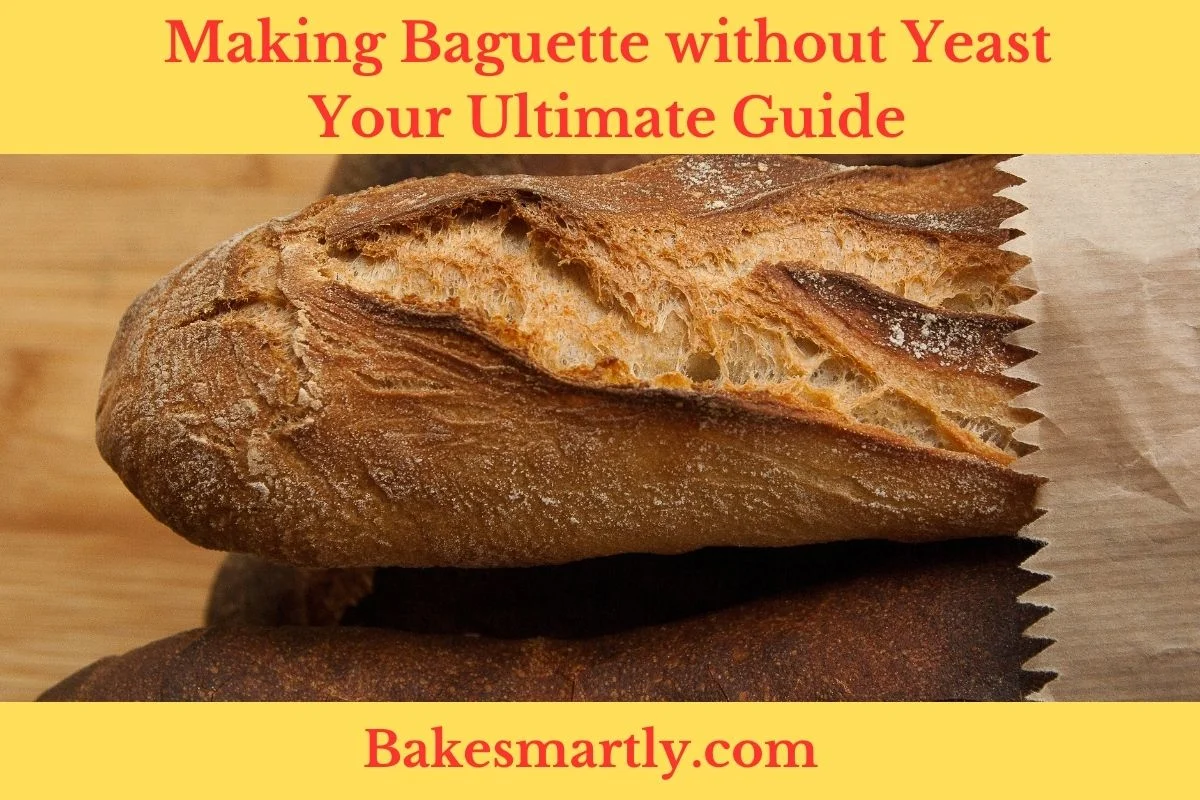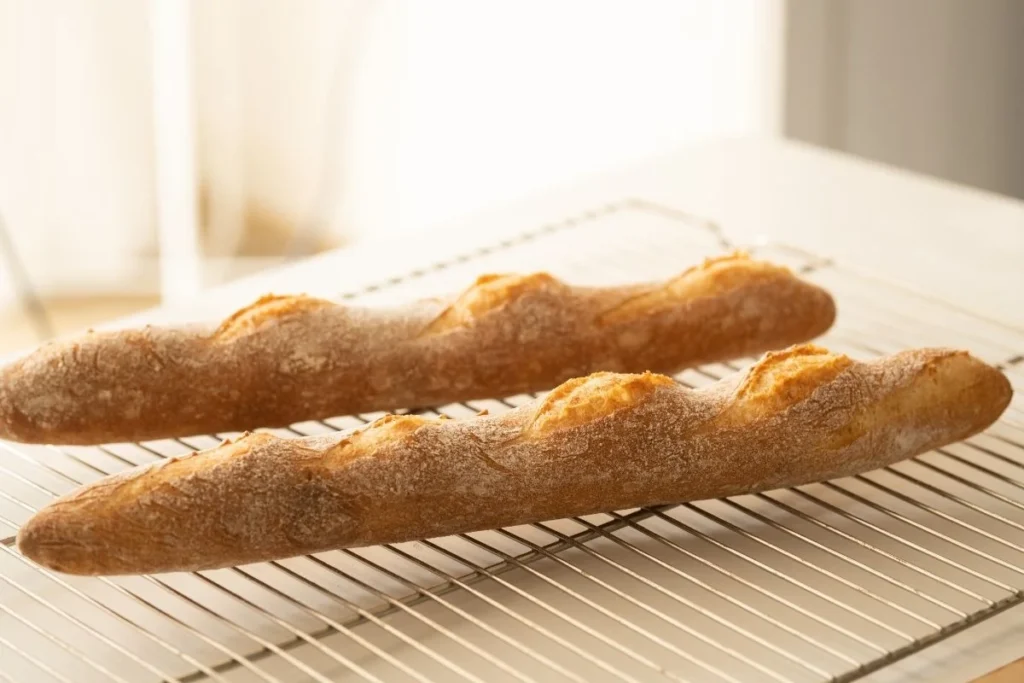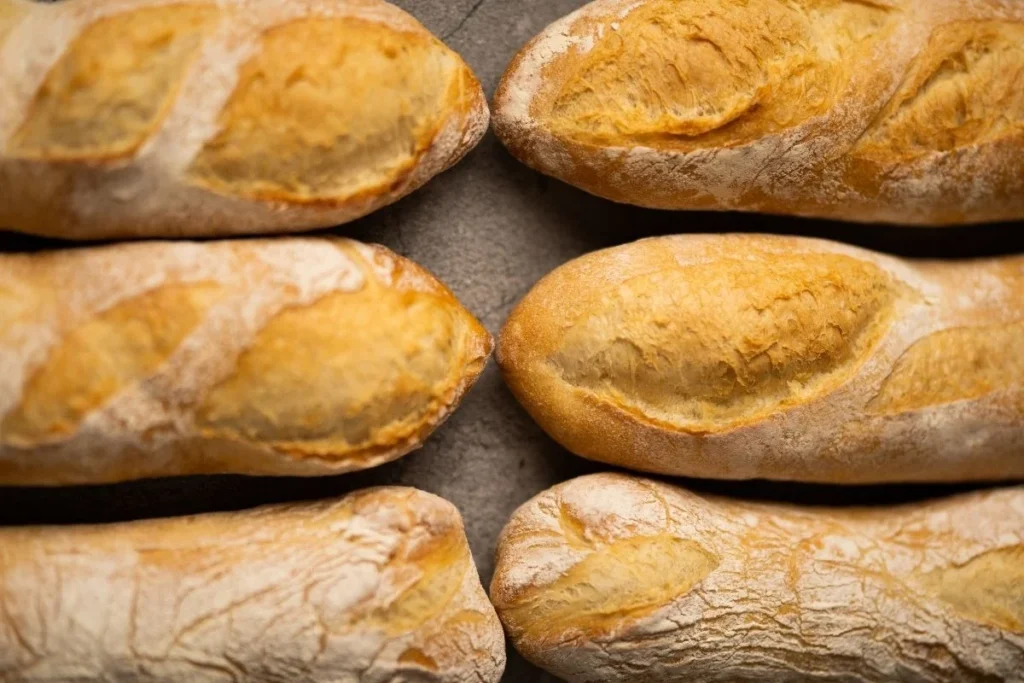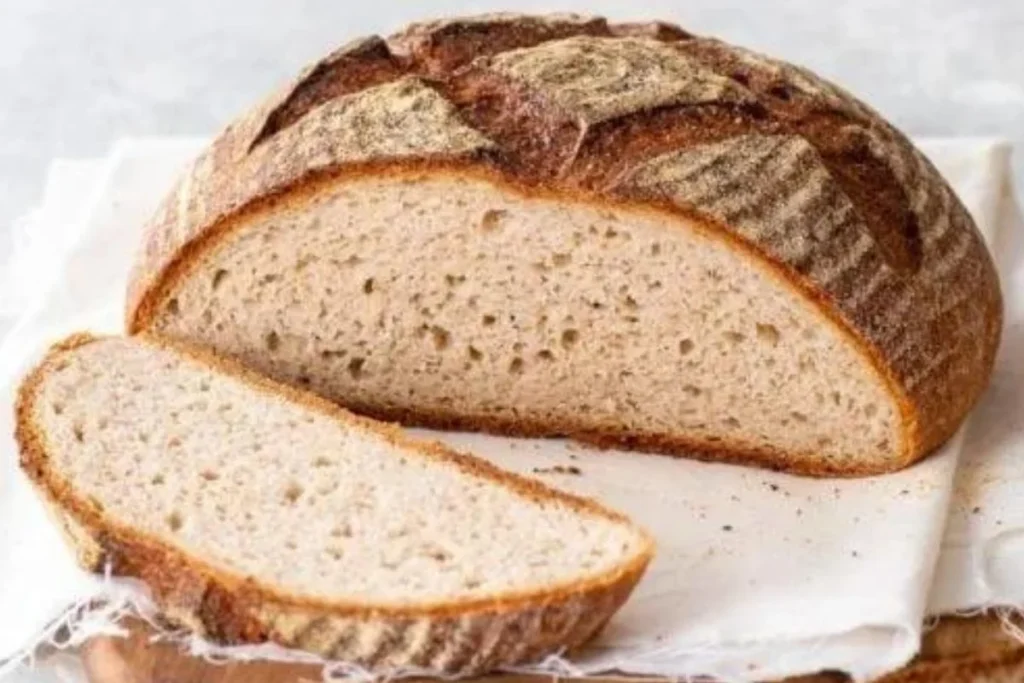
Making Baguette without Yeast | Your Ultimate Guide
Baguettes are a staple in French cuisine, loved for their crispy exterior and soft, chewy interior. Traditionally, baguettes are made with yeast, which contributes to the bread’s rise and distinct flavor.
However, what if you find yourself in a situation where yeast is unavailable, or you simply want to explore alternative methods?
Fear not! In this ultimate guide, we will delve into the art of making baguettes without yeast, providing you with a step-by-step process, tips, and a delightful recipe that will leave you with a delicious homemade baguette.
Table of Contents
ToggleCan You Make a Baguette without Yeast?
Yes, you can make a baguette without yeast by using other stuff like baking powder or baking soda instead. Normally, baguettes use yeast to make them rise, but these alternatives can still give you that lift you need.
Adding acidic stuff like buttermilk or yogurt can boost the rising process. Just keep in mind, the texture and taste might be a bit different compared to yeast-made baguettes.
But if you play around with different recipes and methods, you’ll find what works best for you.
Three Yeast Alternatives for Making Baguettes
For folks looking for different ways to make baguettes without using traditional yeast, there are a few options that can add interesting flavors and textures to your baking.
1. Baking Powder
Baking powder is a handy leavening agent often used in things like quick breads and cakes. It’s made of an acid (usually cream of tartar) and a base (usually baking soda).
When mixed with moisture and heat, it creates carbon dioxide gas, making the dough rise. Using baking powder for baguettes gives them a quick rise and a slightly different texture compared to those made with yeast. It’s great when you’re short on time and need your bread to rise fast.
2. Sourdough Starter
Sourdough adds a unique tangy flavor to baguettes. A sourdough starter is a mix of flour and water that traps wild yeast and lactic acid bacteria from the air. This mix ferments the dough, giving it both rise and a complex flavor.
Making baguettes with sourdough takes longer because of the fermentation process, but the taste and texture are totally worth the wait.
3. Baking Soda and Acid Combo
Mixing baking soda with an acid like vinegar or citrus juice causes a chemical reaction that releases carbon dioxide gas. This method is a quick and effective way to make your baguette dough rise.
It might not give your bread the same depth of flavor as sourdough, but it’s faster than using yeast. Just make sure the acid is evenly mixed in the dough to get an even rise and avoid any leftover taste from the leavening agents.

Advantages and Disadvantages of Making Baguette without Yeast
When you make baguettes without yeast, it opens up a whole new world of possibilities. There are good and bad sides to it that are worth looking into.
Whether you choose baking powder or a sourdough starter, knowing the pros and cons will help you decide and make your yeast-free baguette just the way you like it.
Pros:
- Quick and Easy Prep: Using baking powder makes the dough rise faster compared to using traditional yeast. This is great when you’re short on time, making yeast-free baguettes a good choice for those who want homemade bread without waiting forever for it to rise.
- Unique Flavors with Sourdough: Going for a sourdough starter gives your baguette a distinct, tangy taste. Sourdough fermentation adds lots of flavor layers, taking your bread to gourmet levels. The longer fermentation time brings out subtle flavors, making the eating experience richer and more interesting.
- Yeast Allergy Friendly: Making baguettes without yeast is perfect for people with yeast allergies or sensitivities. Baking powder and sourdough starters let you enjoy fresh-baked bread without worrying about health issues related to yeast.
- Simple Ingredients: Yeast-free baguette recipes usually need fewer ingredients, making them easy for home bakers with basic pantry items. This simplicity not only makes baking easier but also lets you get creative with flavors and extras.
Cons:
- Different Texture: While baking powder makes the dough rise fast, it might give the baguette a slightly different texture compared to the ones made with yeast. The bread might be denser, and it might not have the same lightness as yeast-leavened bread.
- Limited Rise with Baking Powder: Baking powder only has so much leavening power, so the baguette might not rise as much as it would with yeast. This is fine for quicker bread recipes, but it might not get as big and fluffy as traditional baguettes.
- Longer Fermentation Time with Sourdough: Using a sourdough starter means waiting longer for the dough to ferment. This extra time might not suit folks who want to bake quickly. You’ll need to be patient with sourdough, as the flavor gets better the longer it ferments.
- Learning Curve with Sourdough: Working with a sourdough starter takes some getting used to. Keeping the starter healthy, understanding fermentation, and getting the right sour taste can be tricky for beginners. But the rich flavors you get with sourdough make it worth the effort.

Step-by-Step Instructions for Making No Yeast Baguettes
Making baguettes without yeast is a simple and satisfying process that gives you tasty bread. It’s great for folks who want a quicker option or have yeast allergies. These baguettes keep the classic French bread taste without needing yeast.
Here’s a step-by-step guide to making your own no-yeast baguettes at home.
Ingredients:
- 3 cups of all-purpose flour
- 1 tablespoon of baking powder
- 1 cup sourdough starter (for the sourdough version)
- 1 teaspoon of salt
- 1 ½ cups of warm water
- 2 tablespoons of olive oil
Step 1: Prepare the Ingredients
Collect all your ingredients and measure them accurately. Preheat your oven to 425°F (220°C) so it’s ready when your baguettes are good to go.
Step 2: Mix Dry Ingredients
In a big mixing bowl, whisk together the all-purpose flour, baking powder, and salt. Mixing the dry stuff well helps your baguettes rise evenly and have a nice texture.
Step 3: Add Wet Ingredients
Make a well in the middle of your dry ingredients and pour in the warm water and olive oil. Slowly mix the wet stuff into the dry stuff, stirring continuously until you have a dough.
Step 4: Knead the Dough
Put the dough on a floured surface and knead it for about 5 minutes. Kneading helps give your baguette structure and texture without yeast.
Step 5: Shape Your Baguettes
Split the dough into two equal parts. Roll each part into a long, thin log, like a regular baguette shape. Put them on a baking sheet lined with parchment paper.
Step 6: Score the Dough
Use a sharp knife or razor blade to make shallow diagonal cuts on top of each baguette. This makes them look nice and helps them expand while baking.
Step 7: Bake
Put the baking sheet in the preheated oven and bake for around 20-25 minutes, or until the baguettes are golden brown. Keep an eye on them to avoid over-baking since there’s no yeast, which means a shorter bake time.
Step 8: Cool Down and Enjoy
Once they’re perfectly baked, take the baguettes out of the oven and let them cool on a wire rack. Then, slice and enjoy your crusty, airy, and tasty no-yeast baguettes that are great for all sorts of meals.

Tips for Achieving the Perfect Crust on Yeast-Free Baguettes
To get the perfect crust on yeast-free baguettes, you gotta pay attention to detail and use a few tricks to make your homemade bread look and taste amazing.
Whether you’re using baking powder or sourdough, these tips will help you nail that crispy, golden crust that’s irresistible.
- Steam is key for a crispy crust. Put a pan of water on the bottom oven rack or spritz water inside the oven before you pop the baguettes in. The steam stops the crust from getting too hard too soon, letting the bread puff up nicely.
- Before baking, score the dough by making shallow diagonal cuts on top of the baguettes with a sharp knife or razor blade. It’s not just for looks; scoring lets the bread expand evenly while baking, preventing weird cracks.
- Use a hot baking stone or a sturdy baking sheet that’s been preheated for your baguettes. A hot surface helps the bread rise quickly and forms a great crust.
- Brushing the dough with olive oil or a mix of water and oil before baking gives the crust a nice golden color and a shiny finish.
- To check if the baguette’s done, tap the bottom – if it sounds hollow, it’s good to go. Or you can use a digital thermometer; the inside should hit around 200°F (93°C).
Troubleshooting Common Issues When Baking Yeast-Free Baguettes
Even with careful preparation, yeast-free baguette baking may encounter common issues that can affect the final product.
Identifying and troubleshooting these challenges will help you refine your technique and achieve consistently delicious results. Here are some common issues and solutions to elevate your yeast-free baguette baking:
Dense or Heavy Texture
If your baguettes turn out dense or heavy, it may be due to over-kneading the dough. Yeast-free doughs don’t require as much kneading as traditional yeasted doughs. Reduce kneading time to maintain a lighter texture.
Lack of Rise
A lack of rise in your baguettes could be attributed to several factors. First, ensure your leavening agent (baking powder or sourdough starter) is fresh and active.
Additionally, inadequate resting time during fermentation can hinder the dough’s rise. Allow sufficient time for the dough to rest and develop.
Flat or Spread Out Baguettes:
If your baguettes spread out excessively during baking, the dough may be too wet or the shaping technique might need adjustment.
Ensure the dough is slightly sticky but manageable, and pay attention to the shaping process to create a tight and well-formed baguette shape.
Bitter or Metallic Taste
A bitter or metallic taste in your baguettes can result from using too much baking powder. Carefully measure the amount specified in the recipe, and avoid using more than necessary to prevent an undesirable taste.
Inconsistent Crust Color
Inconsistencies in crust color may arise from uneven oven temperature or inadequate steam. Check the oven temperature with an oven thermometer and ensure steam is created during the initial baking stage to promote a uniform crust.
Sourdough Over-Fermentation
If you’re using a sourdough starter, over-fermentation can lead to an excessively sour taste and a collapsed structure. Monitor the fermentation time and adjust accordingly. The dough should rise sufficiently but not overly, resulting in a well-balanced flavor.
Final Thoughts
Making baguettes without yeast is not only possible but also an exciting culinary adventure. Whether you choose to use baking powder for a quick rise or a sourdough starter for a tangy flavor, the result is a delicious bread that can be enjoyed with various toppings or as a side to your favorite meals.
So, roll up your sleeves, gather your ingredients, and embark on the journey of creating yeast-free baguettes that will surely impress your taste buds and those of anyone lucky enough to share in your homemade bread delight. Happy baking!
Lindsey Mackenzie
About me
Hi there! I’m Lindsey Mackenzie, the founder of Bake Smartly. Baking has been my passion since childhood, growing up in my father’s bakery. With Bake Smartly, I’m excited to share my love for all things sweet and savory. Join me on this delicious journey as we whip up scrumptious treats and sprinkle joy into every bite!





